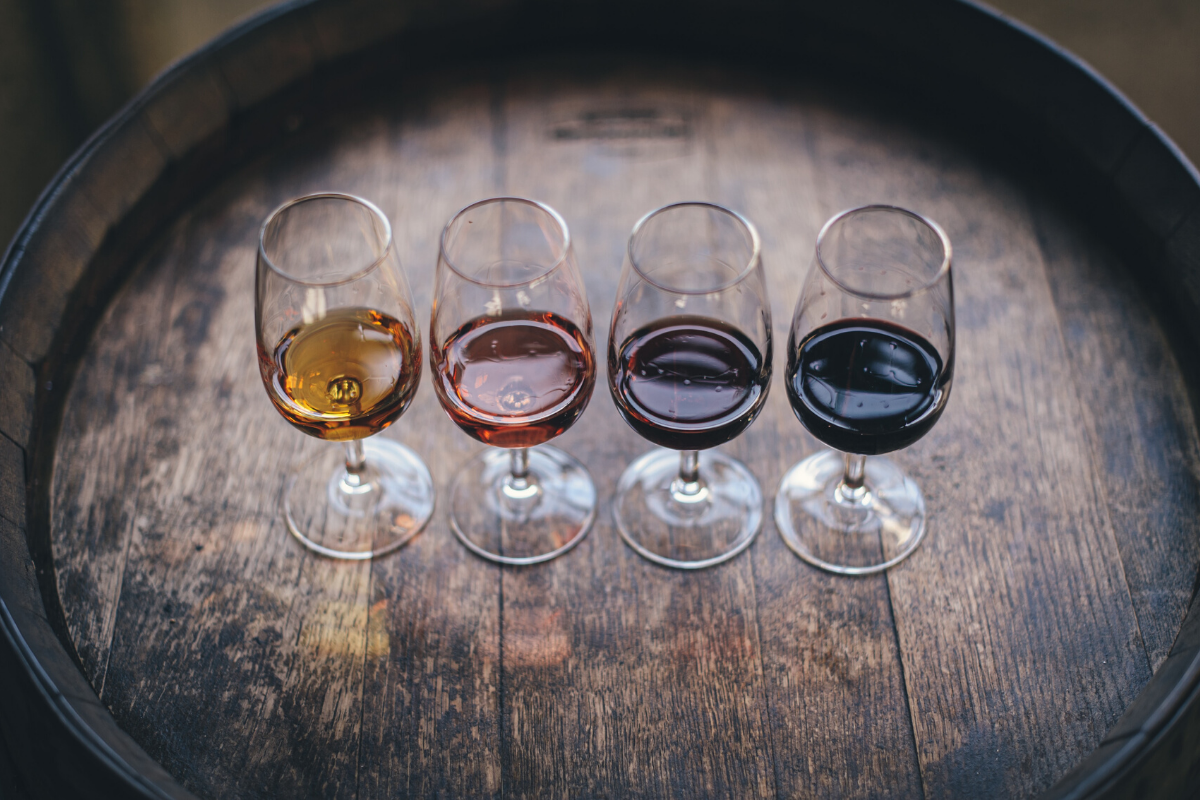Planning a visit to a stunning Australian winery? Or are you just wanting to order the right bottle of wine at your next night out? Then we have a few tips you’ll need to know before you even pour the bottle.
Understanding the art of pouring and tasting wine is not merely a ritual. Wine culture has a wellspring of customs and traditions that define everything from the ‘right’ way to pour wine, to the correct glass for every grape, to the best ways to taste wine.
So, to help you say cheers in style, Hunter and Bligh has sought out the help corporate waiter Christopher Kelly to share 10 etiquette tips on how to correctly pour and taste wine. From opening to drinking, these tips are essential for every wine drinker to know!
1. Always use the correct glassware for the type of wine
Wine glass sizes are designed purposefully: white wine requires to be more compact to keep in its coldness, while red wine requires a larger bowl surface with a higher rim to best showcase its flavours and aromas. In short, use a bigger glass for red wine and a smaller glass for white wine. However, if you are wanting to really take in the flavours, a bigger glass is perhaps best for all wines.
As for sparkling wine, it seems etiquette has yet to catch up with science. The custom is drinking them out of flutes (or coupe-shaped glassware if you’re doing a 1930s themed party). However, science tells us the best glass to use for sparkling wine or Champagne is a cross between a flute and a white wine shaped glass.
2. It’s okay if you don’t know, just ask
While pretending to know your wines may make you sound smart, be aware that waiters (and perhaps some of your friends) can easily tell when you don’t. We’ll probably giggle in the cleanup area about your silly misconceptions about sweetness and acidity of particular wines. But, in saying that, a lot of wine waiters will respect you more if you ask us rather than fabricate assumptions.
3. Sniff tests are not for all occasions
Nothing is as both entertaining and embarrassing as a client conducting a sniff test for a $30 bottle of wine at an average restaurant. Mainly because that $30 bottle of wine most likely costs around $12 at the local bottle shop. And, on top of that, the waiter likely poured a full glass and not a small splash that is best for sniffing. Of course, taste testing is a necessity at all restaurants, to ascertain whether the wine is off or has become tainted by the cork. In saying that, sniffing should only be left for vineyards and high-end restaurants, or else you’ll be seen as pompous.
4. Hold your wine glass the right way
Hands generate warmth and give it off just as easily, which is why you should hold your wine glass the right way. While it might seem nice to cup your white wine glass with both hands because it’s rather warm at the bar, it’ll only warm up your white wine. That being said, a white wine glass and a Champagne glass should be held at the top of the stem, while a red wine glass should be held like you’re cupping a tennis ball with the stem falling between fingers.
5. Tilt your Champagne flute
One particular thing that irritates most waiters is when we are topping up people’s glasses of bubbly and they hold it straight up. This is actually quite awkward because as we pour, we will have to stop for a 10-second intermission while the mile of bubbles slowly fizzles down so we can finish topping it up properly and fully. If you tilt it, we won’t be standing here in an awkward pause. That being said, if etiquette kept up with science, this issue may not be apparent.

Photographed by Roman Samborskyi. Image via Shutterstock.
6. Understanding white wine varietals
White wines are differentiated by the grapes they use, with sauvignon blanc and chardonnay using green-coloured grapes, while pinot gris and pinot grigio use grey to blue coloured grapes. The name of the wine is the name of the grape (ie, sauvignon blanc uses sauvignon blanc grape), and its acidity, sweetness and flavour depend on the climate, the environment where the wines are made and the added flavours mixed in. Sauvignon blancs are usually more acidic and crisp with a lighter feel and taste, while chardonnay is often fuller in feel and taste and can be sweeter. As for pinot gris and pinot grigio, they both use the pinot gris grape, so a lot of their differences depend on climate, environment and production.
7. Understanding red wine varietals
Shiraz is made from the syrah grape and, generally, this wine falls between medium- to full-bodied with high levels of tannins – a textural element that makes wine taste dry and which originates from flora. Cabernet sauvignon is full-bodied and also showcases high tannins, with noticeable acidity.
Comparing the two, shiraz and cabernet differ in flavours, with shiraz being more peppery and smokey, while cabernet reveals tones of blackberry and cassis. Merlots are also medium- to full-bodied but hold fewer tannins than shiraz and cabernet and differ depending on the time of harvesting. Early harvest brings forth acidity and a more medium-bodied finish, while late harvesting creates a full-bodied wine, that’s higher in alcohol and purpler in colour. The last of the popular reds is pinot noir, which is harder to cultivate due to the grape growing in tight clusters – allowing a higher prevalence of plant disease. Pinot noirs are medium-bodied with low tannins and can differ in flavours as it ages.
8. Sometimes your waiter won’t know either
If you are at a function in a non-restaurant venue then chances are the waiters there are not going to be familiar with the wines that are served, simply because they’re outsourced waiters from a hospitality staffing agency. While these staff members are trained in understanding the different types of wines and wine etiquette, they may not be able to tell you if the wine they are serving is sweet or acidic or if it even tastes great. They could grab the manager, but they probably won’t know. Your best bet in these circumstances is to consult the wonders of the internet.
However, if you are in a permanent restaurant and the waiter cannot tell you, then politely tell them to learn about them. Whatever you do, do not ever be rude to them. They are humans after all.
9. Treat a bottle of wine like a newborn baby
Whenever you hold a bottle, please handle it as if it’s a newborn baby. Do not hold it by the neck. And that especially goes for pouring wine too. Further, unless you are at a high-end restaurant with specific customs, you do not need to pour a bottle of wine with your thumb up the bottom. Instead, a better way to pour wine is by holding the lower end of the bottle – like you would hold your smartphone – and pour with the label facing the person whom the pouring is intended for. For red wine, it is wise to carry a cloth to wipe the lip of the bottle after each pour. For white wine, you should hold the bottle with a cloth so as to not transfer the warmth from your hands to the bottle.
10. Things can go wrong
Lastly, on this passive-aggressive journey of wine etiquette tips, we must remember that things can go wrong. And we must remember that when these things happen, we must keep our cool. This goes for patrons and waiters. Sometimes the cork breaks up in the wine as the waiter tries to coax it out. Sometimes the wine is off. And sometimes waiters can drop their tray of glassware (with or without the help of a slightly intoxicated patron). In these circumstances, we must remember the famous French phrase ‘c’est la vie’. Because that truly is life.
Do you want to learn more about wine terminology? From acidity to tannins, be sure to keep this Ultimate Wine Glossary handy! Otherwise, why not search, store and rate your way through these Top Wine Apps to Use.



Before you clink your glasses and say cheers, here’s a couple of wine etiquette tips you need to know.